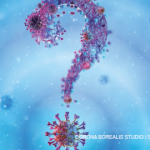This changed in the 19th century, when Carl von Rokitansky, a pathologist, and Joseph Škoda, an internist, founded what we now call the Second Viennese Medical School, which became the preeminent institution for medical learning throughout Europe. This was largely thanks to Dr. Rokitansky, who realized that clinical syndromes were often an incomplete expression of abnormal organ function and that organ pathology was directly linked to human disease.7 Rokitansky also realized that, contrariwise, clinical signs and symptoms could be used to infer the degree of organ dysfunction. Together, Drs. Rokitansky and Škoda developed the concept of clinicopathologic correlation, as in the radiologist’s catchphrase: clinicopathologic correlation is suggested.
Dr. Škoda was responsible for bringing the scientific method to the bedside. Previously, physical exam findings were described idiosyncratically, by comparing the sounds of auscultation and percussion to animal noises, sawing wood or creaking leather. Dr. Škoda systematically examined countless patients until he could classify these sounds by pitch and tone. He was the first, for example, to differentiate normal heart sounds from murmurs and pericardial friction rubs. Our tendency to use such words as bronchial and tympanic is a direct descendant of his work.
Later in his career, Dr. Škoda earned renown for his lectures on the application of the scientific method to clinical medicine. He taught physicians to rely only on their own physical examination, rather than hearsay. He also taught his method of diagnosis: “Recognizing morbid anatomy as the sole basis for an accurate diagnosis, he endeavored to unravel the complex phenomena of disease, to reduce them to their simple elements, and per viam exclusionis to arrive at an exact diagnosis.”8
One of the reasons we know about Dr. Škoda’s method of exclusion is because of the impact it had on Ignaz Semmelweis, who applied Dr. Škoda’s method to his analysis of puerperal fever.
The Viennese hospital operated two maternity clinics, which admitted patients on alternating days. The First Clinic, which was a teaching service for medical students, had a maternal mortality rate due to puerperal fever of 10%. The Second Clinic, which was a teaching service for midwives, had a mortality rate of only 4%. The difference was so stark that women begged to be admitted to the Second Clinic—or chose to deliver in the streets.9
Dr. Semmelweis excluded overcrowding as a cause for the difference because the Second Clinic was almost always more crowded than the First Clinic. He excluded other variables because both clinics were housed in the same facility and, therefore, had the same environment. Eventually, he decided the difference must be the medical students. In particular, he realized that, unlike midwives, medical students also dissected cadavers.


